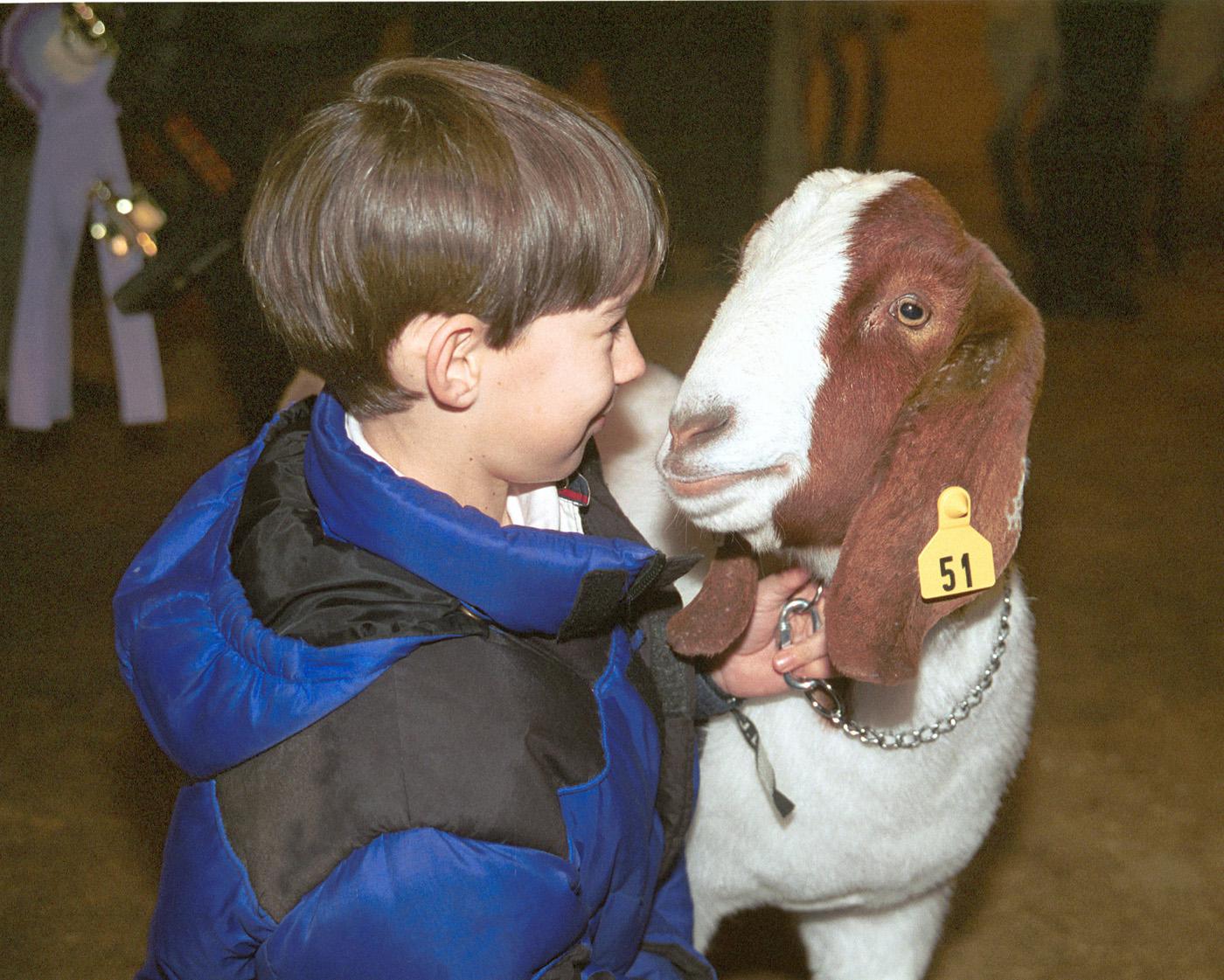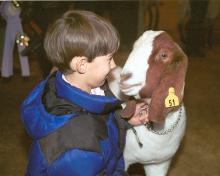Information Possibly Outdated
The information presented on this page was originally released on February 11, 2002. It may not be outdated, but please search our site for more current information. If you plan to quote or reference this information in a publication, please check with the Extension specialist or author before proceeding.
Top exhibitors gain more than trophies
MISSISSIPPI STATE -- Blue ribbons and trophies may be the most recognized goals of Dixie National livestock exhibitors, but the top 4-H and FFA members walk away with much more.
Twenty-five scholarship recipients and the youth owners of 37 market animals received almost $197,000 during the 2002 Dixie National Sale of Junior Champions on Feb. 7.
The Dixie National Junior Livestock Show, held each February in Jackson, has concluded for the last 33 years with the sale of champion market animals. Philanthropic buyers have contributed more than $2 million throughout the history of the Sale of Junior Champions. In addition to the $172,359 received for 37 market steers, hogs, lambs and goats, the Sales Committee awarded 24 scholarships worth $1,000 each and one for $500 to this year's top exhibitors.
"We want to reward those who work hard all year, but did not have an animal qualify for the sale," said Ted Kendall III, chairman of the Sales Committee. "More than 4,000 youth take part in the Dixie National show, but only 30 or so qualify for the sale. That leaves many fine youth who still deserve credit for all the effort they put into their livestock projects."
Kendall said the 4-H and FFA livestock projects train young people in a work ethic that will take them through life and help make them good citizens as adults.
Katie Dorris of Pontotoc has been involved in 4-H for nine years and just received her second Dixie National scholarship. In 2001, she earned $1,000 when she was named a premier exhibitor of lambs. This year, as a high school senior, she received another $1,000 toward tuition at the Mississippi college of her choice.
"The premier exhibitor scholarship took a lot of hard work. We had to prepare a resume, complete a skill-a-thon, go through an interview process and score well in showmanship competition, which demonstrates (the exhibitor's) ability, not the lamb's qualities," Dorris said. "The senior scholarship process just involved an application outlining your livestock involvement, community activities and school grades."
Dorris, who is following in both her parents' shoes in 4-H, said the scholarship money will take a lot of pressure off her first year in college. She plans to attend Mississippi State University and major in business before continuing to law school.
"You really don't get involved in livestock projects for the money, but 4-H taught me a lot and has helped me build friendships with people my age and with adults," Dorris said.
Gale Chrestman, 4-H livestock specialist with MSU's Extension Service, said buyers and donors to the scholarship program are generous because of the benefits they see for the youth.
"Even during a year when there are economic concerns across the country, the total amount of money contributed at the Sale of Champions increased about $50,000 from last year," Chrestman said. "Buyers seemed determined to encourage and reward youth for their hard work."
The nine steers averaged $7.72 per pound, compared to $5.31 last year. The 13 hogs averaged $14.38 per pound, compared to $10.46 last year, and the 13 lambs averaged $18.54 per pound compared to $18 in 2001. Market goats made their debut to the sale this year, and the two champions averaged $26 per pound.






